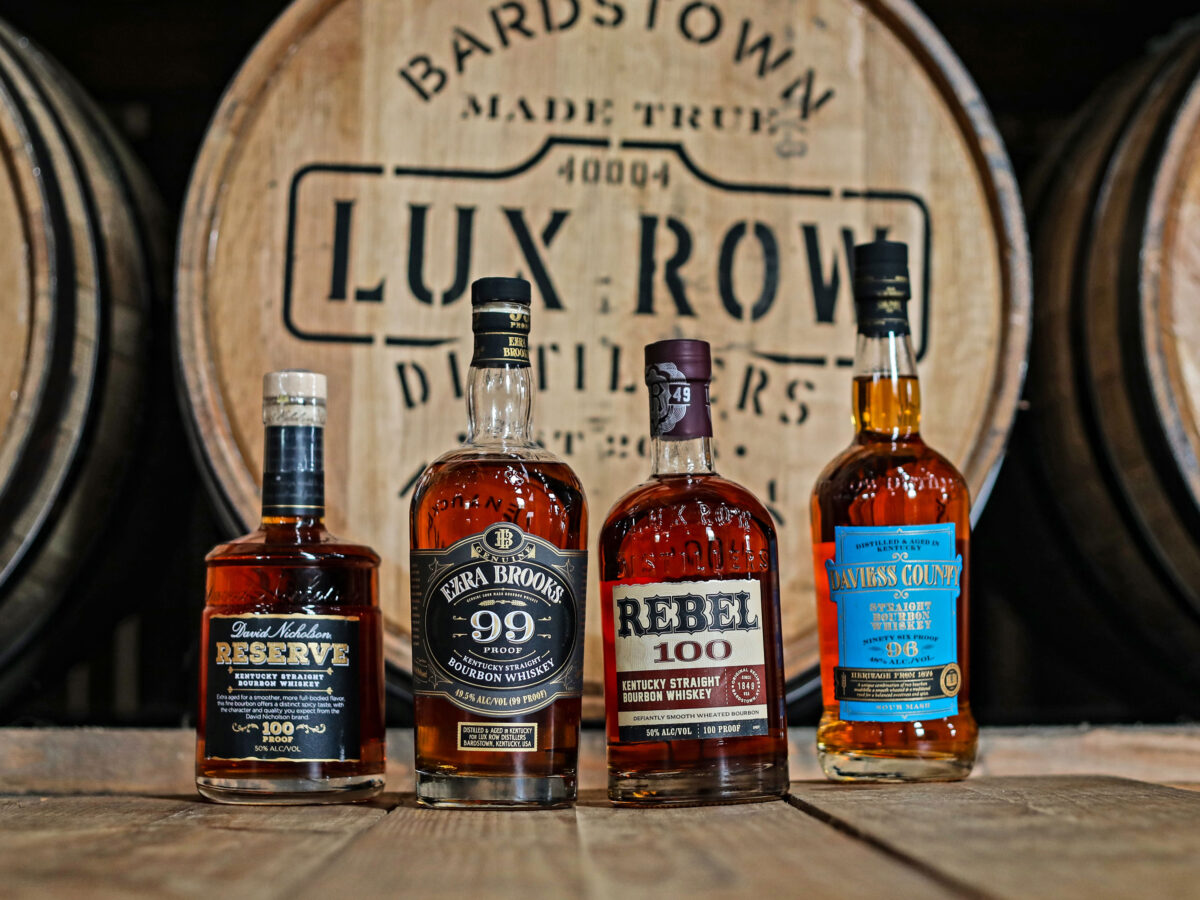If you’re a curious drinker (and we hope you are), we’re here to provide an expert look into the entire bourbon distillation process — from grain to barrel to bottle. So, buckle up, and pour yourself a nice dram of a Lux Row Distillers bourbon. It’s time to explore the process that goes into every bottle.
Making the Mashbill
A mashbill is just ‘whiskey-speak’ for the assortment of grains that goes into whiskey. Distillers choose different varieties and ratios of grains (more on how that helps distinguish bourbon from whiskey later). This early step plays a significant role in the final product’s flavor.
The sugar in the grains must be released to kick off the process, so the grains are ground up into a fine powder (like flour) and mixed with hot water in the cooker. At this stage in the game, the mix looks more like porridge than bourbon, which means the following two steps are entirely transformative.
Fermentation Begins
Fermentation is where the porridge-like substance known as the mash, starts to transform into something alcoholic inside the fermentation tanks. Yeast is added to the mix, turning the sugar released from the grain into alcohol. This part of the whiskey-making process takes a few days, and when fermentation is complete, the mixture is somewhat of a beer-like substance. In fact, this is known as “distiller’s beer.” We aren’t there yet, but we’re getting closer to bourbon!
Distillation Heats Up
Distillation is another crucial step to be aware of as you delve into how whiskey is made. This step is where the liquid goes from sour and grainy to more concentrated. Essentially, the liquid is heated in stills, and the alcohol becomes a vapor and rises while the grains and water stay at the bottom. Then, the vapor rises through the top of the still into the condenser where it transforms back to a liquid.
Either pot stills or column stills can be used for distillation, but most whiskey and bourbon are made in column stills. After distillation, it’s on to the final (and most time-consuming) part of the process — aging.
Whiskey is Aged Before Bottling
Although drinking the result of distillation would certainly help you catch a buzz, it wouldn’t taste very good — and it’d be a far cry from the bourbon you know and love. Aging, which occurs in wood barrels, does wonders in imparting flavor. The type of barrel, the climate in which it’s stored, and the duration of aging all help give whiskies their unique flavor profiles.
Aging can happen in just a few years or for far longer. Not only does aging contribute to a bottle’s flavor and color, but it also helps determine the price, as older bottles are more expensive.
Bourbon vs. Whiskey
Now that you understand the general process, you’re probably wondering what distinguishes bourbon from whiskey. Thinking back to your elementary school geometry class is the easiest way to conceptualize this. Like all squares are rectangles, but not all rectangles are squares, all bourbon is whiskey, but not all whiskey is bourbon.
Want to know the ABCs of bourbon? Check out this blog from David Nicholson.
Taste the Process with Lux Row Distillers
Hopefully, by now, you feel confident answering the question, “How is bourbon made?” However, the final step in understanding the ins and outs of this delicious spirit is tasting it. Pick up any Lux Row Distillers bourbons to taste the care we put into every bottle.
Better yet, book a tour to get a behind-the-scenes look into how we craft our bourbon.



